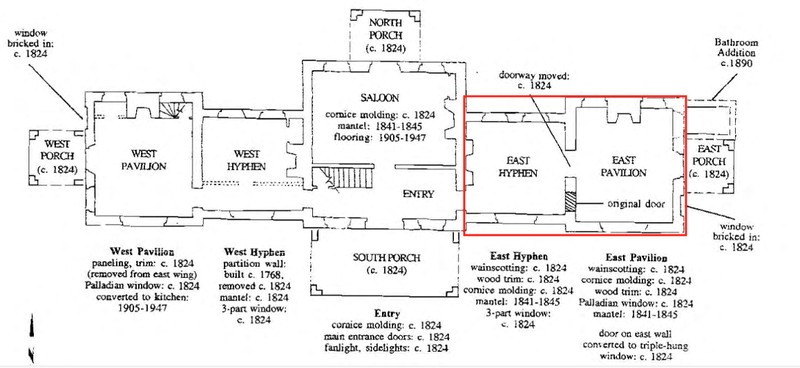Battersea Interior: East Hyphen & Pavilion
Introduction
Text-to-speech Audio
The east hyphen was originally used as a parlor or drawing room where visitors and guests would be received. The east pavilion beyond was the Banister’s dining room. Both were elaborately decorated. In the 1820s, these rooms were converted into double parlors and given marble mantels and woodwork in line with the Federal renovations Judge May oversaw during this period. The window on the east wall of the pavilion leading to the east porch used to be a doorway, but was converted into a triple-hung window and secured with shutters. Jefferson himself was a fan of this style of window, including them in his home at Monticello. In the 1890s a bathroom was installed on the outside of the east pavilion with a doorway leading there, however it has since been removed and the doorway resealed.
Images





Sources
Graham, W., & Wegner, M. R. (1988). Battersea: A Historical and Architectural Study. Prepared for the Friends of Battersea Committee.
